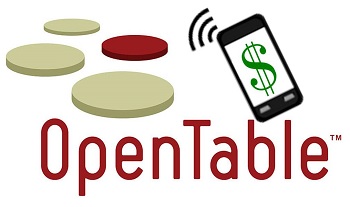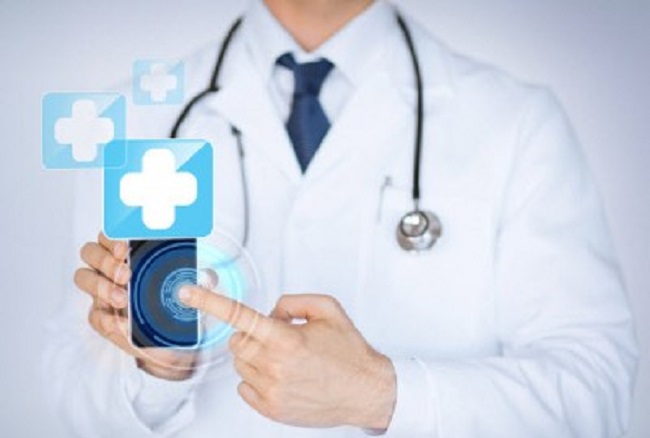OpenTable is getting ready to expand into new markets later this year
OpenTable is a mobile payments program that was first announced in early February by a company of the same name. The company has been experimenting with the program for some time, evaluating its viability as a comprehensive mobile commerce service. Thus far, OpenTable has proven to be quite useful and has received support from consumers and businesses alike. The program is designed to appeal to the food service industry, where mobile commerce is beginning to see more adoption.
Restaurants are looking for mobile-centric services
Restaurants are beginning to take steps to cater to mobile consumers. These consumers are looking for ways to use their smartphones and tablets to place orders and make payments in a way that is convenient to them. Convenience is one of the major appeals of mobile commerce and those in the food service industry are looking to provide effective services that highlight this convenience.
OpenTable plans to be available in 20 large cities by the end of the year
 OpenTable has announced that it is expanding its services to New York. A number of restaurants in the state will begin making use of the mobile payments program and the company believes that its program will be put to use in 20 large cities throughout the U.S. by the end of the year. OpenTable will facilitate mobile payments for those visiting restaurants that are using the program. In some cases, consumers will be able to make payments directly from their smartphones. Some restaurants will provide a tablet device at the table, allowing customers to pay for their meals from through that device.
OpenTable has announced that it is expanding its services to New York. A number of restaurants in the state will begin making use of the mobile payments program and the company believes that its program will be put to use in 20 large cities throughout the U.S. by the end of the year. OpenTable will facilitate mobile payments for those visiting restaurants that are using the program. In some cases, consumers will be able to make payments directly from their smartphones. Some restaurants will provide a tablet device at the table, allowing customers to pay for their meals from through that device.
OpenTable to take advantage of its large consumer base in order to compete with other programs
OpenTable will be competing in a very crowded market. Mobile commerce services are becoming more common and many of these services are beginning to cater to the needs of the food service industry. In order to effectively compete, OpenTable is leveraging its already sizeable consumer base. The OpenTable application comes pre-installed on many smartphones, making it one of the most widely available, but not necessarily widely used, apps in the mobile commerce market.
A new mobile app is using location based tech to make sure that the ill can find the medical services they need.
Geolocation technology has been shown to be successful for use in mobile marketing and in specific programs such as ride sharing services, but this tech is now also branching out into health care as a location based app makes it possible for patients to use their smartphones to arrange for house calls from a physician.
The smartphone service, called Pager, is currently available only to patients living in Brooklyn and Manhattan.
The intention of the service is to start spreading outward into other cities by 2015. This geolocation technology based app has only just launched in May, but is becoming quite popular among mobile device users. The tech behind the application was designed by Oscar Salazar, the co-founder of Pager, who had also previously been an engineer on the team that was behind the creation of the on demand ride share technology that is now used by Uber.
Salazar used his knowledge of geolocation technology to come up with a new service along with two other entrepreneurs.
 Together, the group of three people managed to raise $3.5 million in investment capital in order to create and launch the Pager mobile app. The marketing director at Pager explained that “We do share some of that [Uber] DNA.” He also added that through the use of this service, “Our doctors come to you. It’s on demand.”
Together, the group of three people managed to raise $3.5 million in investment capital in order to create and launch the Pager mobile app. The marketing director at Pager explained that “We do share some of that [Uber] DNA.” He also added that through the use of this service, “Our doctors come to you. It’s on demand.”
This startup has joined a rapidly growing health care trend that has seen patients looking to try to step away from the experience of primary care clinics and hospitals, in order to receive “convenience care.” That sector involves a number of different types of service, including urgent care clinic based episodic treatments. However, many people are also starting to see the opportunity presented by care offered in a person’s own home through the use of video conferencing, email, remote health monitoring, and – through this service – actual house calls.
Patients and insurance companies, alike, have been working hard to steer health care out of emergency rooms, where the highest treatment costs are generated. With geolocation technology, this is becoming possible, even without having to call ahead to schedule appointments or sit around for ages in a waiting room.
 OpenTable has announced that it is expanding its services to New York. A number of restaurants in the state will begin making use of the mobile payments program and the company believes that its program will be put to use in 20 large cities throughout the U.S. by the end of the year. OpenTable will facilitate mobile payments for those visiting restaurants that are using the program. In some cases, consumers will be able to make payments directly from their smartphones. Some restaurants will provide a tablet device at the table, allowing customers to pay for their meals from through that device.
OpenTable has announced that it is expanding its services to New York. A number of restaurants in the state will begin making use of the mobile payments program and the company believes that its program will be put to use in 20 large cities throughout the U.S. by the end of the year. OpenTable will facilitate mobile payments for those visiting restaurants that are using the program. In some cases, consumers will be able to make payments directly from their smartphones. Some restaurants will provide a tablet device at the table, allowing customers to pay for their meals from through that device.
 Together, the group of three people managed to raise $3.5 million in investment capital in order to create and launch the Pager mobile app. The marketing director at Pager explained that “We do share some of that [Uber] DNA.” He also added that through the use of this service, “Our doctors come to you. It’s on demand.”
Together, the group of three people managed to raise $3.5 million in investment capital in order to create and launch the Pager mobile app. The marketing director at Pager explained that “We do share some of that [Uber] DNA.” He also added that through the use of this service, “Our doctors come to you. It’s on demand.”